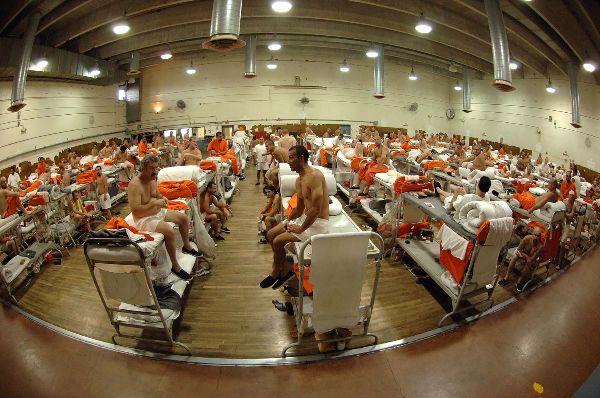California Governor Challenges Prison Inmate Population Cap

California Governor Jerry Brown is challenging a federal court order demanding that the state vastly reduce its prison population to improve prison health conditions. This is not the first time that prison population has been an issue for the state, and is a legal battle that has already gone before the Supreme Court. Two key aspects of approaching the prison inmate population cap involves inmate health concerns and public safety.
Brown had complied with the court's June deadline regarding lowering the number of inmates, but felt that public safety would be put at risk to do so this year. For this reason, he seeks to overturn the deadline itself, as well as the court's recommended population cap.
According to the Public Policy Institute of California (PPIC), "The state prison population has stabilized in the past five years, but the system is still overcrowded."
California reached its height capacity with 173,000 incarcerated in 2006. In 2010, a gradual decrease left the state with 163,000 at the year's end. State penal institutions were operating at 175% of their capacity, and poor health care providers resulted in the Supreme Court's mandate that nearly 30,000 prisoners be released within a two-year period.
In response to the Supreme Court's 2009 mandate, California now sends many "lower-level" offenders to local custody instead of state institutions, called realignment. Since the advent of realignment in the state in 2011, the total "in-custody" prison population is down by twelve percent, from 161,000 to 141,000 at the end of February 2012.
The Brown administration argued in their filings on Monday:
"The overcrowding and health care conditions cited by this court to support its population reduction order are now a distant memory. California's vastly improved prison health care system now provides inmates with superior care that far exceeds the minimum requirements of the Constitution."
The 2009 mandate could be argued in defense of inmates' health care statewide. In this mandate, federal court judges blamed overcrowding for "conditions so dismal they violated inmates' constitutional rights." This period also saw an average of one inmate death per week - typically due to neglect or poor health care.
California governance and correctional departments do not share this sentiment, however. Jeffrey Beard, the new secretary of the Department of Corrections and Rehabilitation expounded their viewpoint in a statement provided to the Associated Press.
"Any further federally-ordered reduction of the California prison population is unnecessary and a threat to public safety," Beard said.
Beard continued that the state has reduced inmate populations by nearly 46,000 since 2006, while continuously improving its treatment of mentally and physically ill patients. State officials contend that less serious offenders already go to county jail as the result of a 14-month old law that sends only serious, violent, and sex offenders to state prisons. It could also be argued that it makes it more difficult to identify remaining criminals who could be released safely.
Attorneys representing inmates argued in their own court filing that California is still failing to provide decent care to prisoners, and that they could release a certain faction of prisoners without endangering the public. Though they agree that conditions have greatly improved, they argue that inmates still die of neglect.
In a state where approximately 595 adults per 100,000 are in a state prison, this issue will continue to vastly polarize those representing inmates and state government and related correctional departments. Since incarceration rates have followed a similar trajectory, increasing from 443 per 100,000 adults in 1990 to a peak of 673 in 1998, California’s incarceration rate ranks eighteenth among the entire country.
As conditions continue to improve, one must view both sides of this issue, and realize the need for humane treatment, prisoner or otherwise.




